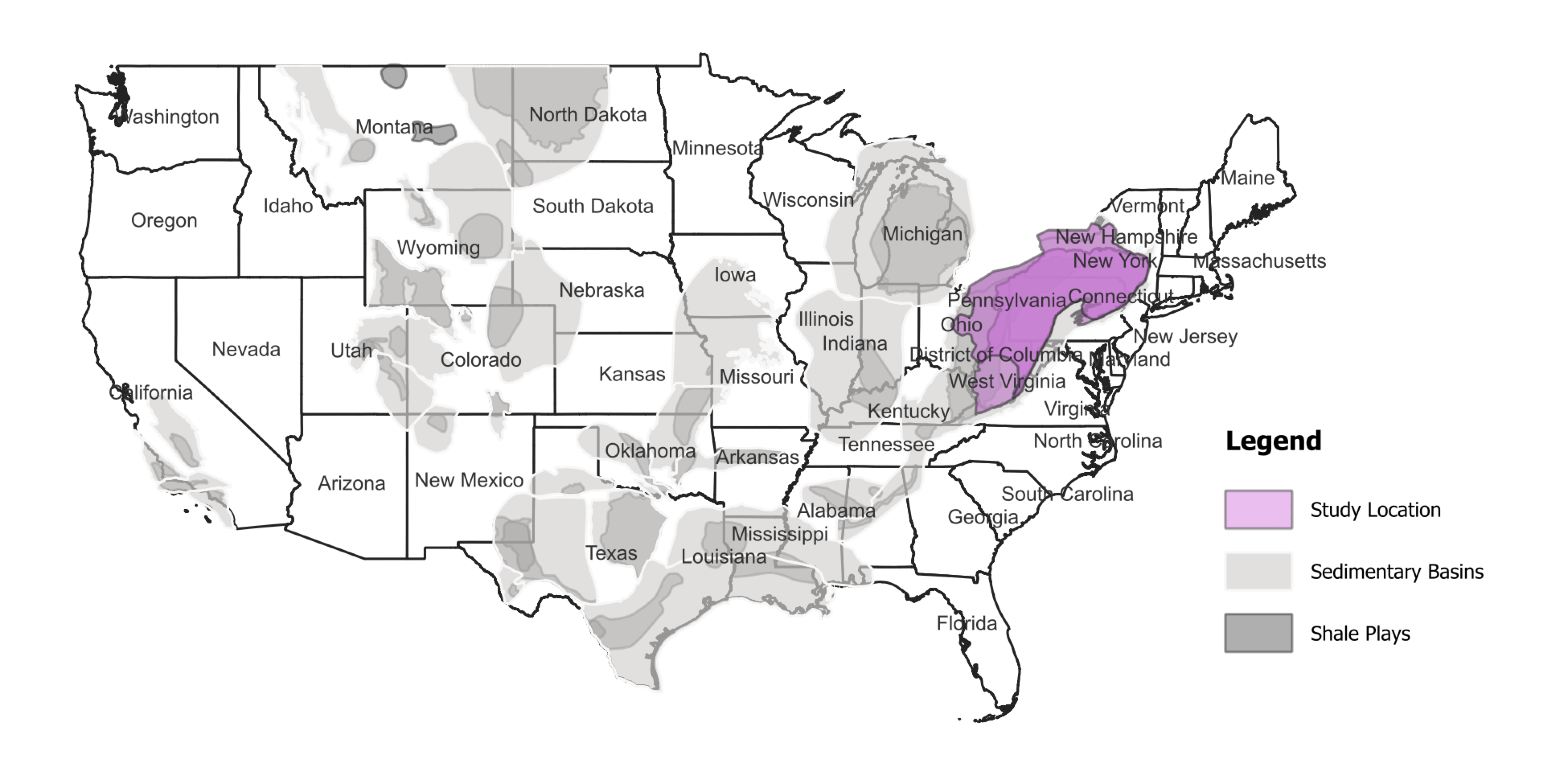Trends in Marcellus-Utica Shale Regional Air Quality due to Unconventional Oil and Gas Development (TriMAQs)
This study aims to understand how oil and gas development might contribute to any local or regional trends in air quality and associated population exposure across the Marcellus-Utica Shale region from 2004-2023. The team is assessing whether changes in operations or governance may have contributed to any observed trends. The investigators are achieving their research aims with the following steps:
- Organize daily air quality monitoring data for criteria air pollutants and volatile organic compounds into a single dataset for the study region from 2004-2023.
- Develop a dataset of daily oil and gas operational activity (including drilling, fracturing, transport, and gas compression) and an inventory of expected emissions across the study region for the same period as the air quality dataset (2004-2023).
- Estimate population exposure to the criteria air pollutants and volatile organic compounds, including exposures experienced by economically disadvantaged areas using the US Census American Community Survey data.
- Estimate the fraction of emissions in the region that come from oil and gas development and how changes in industry practice and governance might have led to changes in air quality.




